Framework for product reformulation: The integration of four disciplines; Nutrition & health, Food technology, Legislation and Consumer perspective
Posted: 18 August 2016 | Fred van de Velde, Senior Researcher, HAS University of Applied Sciences and Group Principal Scientist of Texture Perception at NIZO Food Research, Annelies van Gunst, Lecturer, HAS University of Applied Sciences and Annet J.C. Roodenburg Associate Professor of Nutrition and Health, HAS University of Applied Sciences | No comments yet
This article describes the ‘framework for product reformulation’, which integrates four essential disciplines: Nutrition & health, Food technology, Legislation and Consumer perspective.
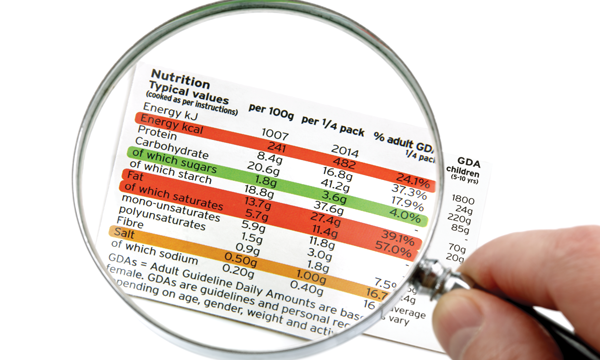

Reformulation has been the subject of many studies. However, to our knowledge no articles focussing on the integration of all four disciplines have been published. Food Technology and the Consumer perspective were integrated to develop a concept of consumer-driven food product development1. Grasso et al. discussed not only the technological aspects, but also legislation and the consumer perceptions of reformulated meat products2. Buttriss described the public health challenges of the diet and the technological aspects of reformulation3. The authors concluded that a multidisciplinary approach is needed. The aim of this paper is to describe and illustrate the ‘Framework for product reformulation’ as an integrated model for reformulation processes. This framework involves four essential disciplines: Nutrition & health, Food technology, Legislation and Consumer perspective (Figure 1). Our focus is on meat and bakery products in Europe (The Netherlands, United Kingdom and Denmark), because these product groups are important contributors to the intake of energy, salt, saturated fat and sugar.
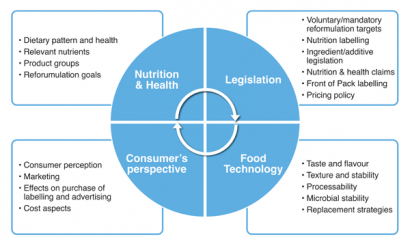

Figure 1: The four disciplines of a Reformulation process and main topics per discipline. Disciplines: Nutrition & Health, Food Technology, Legislation and Consumer’s perspective
Nutrition & health
Decreasing the intake of energy, salt, saturated fat (SFA) and sugar has been the focus of many initiatives from government, industry and nongovernmental organisations worldwide. In 2004 the WHO Global Strategy on Diet, Physical Activity and Health provided an action plan on the reduction of nutrients with negative health impact4 . National governments harmonised policy goals towards standards for food categories with the ultimate aim of helping consumers make healthier choices. Reduction of salt and trans fatty acids were the first aims, followed by saturated fat and sugar. Table 1 summarises the intake of salt, saturated fat and sugar in the three selected EU countries. The dietary intake goals (Table 1) have been translated into criteria for products or product categories. Bread, cereals and bakery products are the main source of salt intake, followed by meat products, cheese and dairy products5. Table sugar, dairy products, soft drinks and sweet and bakery products are the main source of sugar intake6. The SFA intake is dominated by cheese, especially in the Netherlands, and by meat products and sweet and bakery products7. A positive example for reformulation is the UK, where salt intake was reduced from 9.5g/d in 2000/2001 to 8.1g/d in 20118 , concluding that the product categories of bakery and meat products are important targets for reformulation.
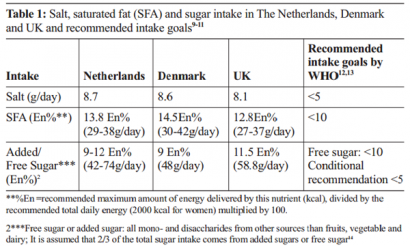

Food technology
Salt, saturated fat and sugar have specific technological functions in food products which determine the possibilities of reformulation. Generally there is no single ingredient that can replace all the technical functionalities, therefore multiple reformation strategies are required.
Salt primarily affects the salty taste and aroma profile of products. In meat and bakery products salt also affects the texture and is important for processing. It acts as a preservative and can control fermentation processes. Different strategies were developed to compensate for the reduction of taste in salt or sodium reduced food products15:
- Use of sodium replacers (KCl and MgSO4,). Next to the salty taste these minerals also contribute to the texture and microbial stability of the product. Owing to a negative impact on the taste profile some of these salts can only be applied at a limited concentration, otherwise masking agents need to be added
- Use of salt enhancers and salt boosters. Examples are monosodium glutamate (MSG), lactates, yeast products and flavours
- Optimisation of the physical distribution of the salt in the product. An inhomogeneous distribution of salt results in a frequent stimulation of taste receptors resulting in taste enhancement
- Use of cognitive mechanisms, such as the consumer awareness of sodium reduction, a step-by-step reduction, which has been applied to reduce salt in bread.
The technological functionality of fat differs over the various product categories. Reformulation of fat can focus on lowering the total amount of fat and/or lowering the amount of saturated fat by changing of the fatty acid composition. Fat determines the hardness, spreadability and texture of products. Moreover, fat stabilises foam structures, acts as a barrier between different layers and delivers translucency and gloss. Furthermore, fat has an enormous impact on flavour.
Two basic approaches to manufacture low-fat products are the use of leaner raw materials and/or the reduction of fat by adding water and/or other ingredients that have less or no calories, such as fibres or fat replacers. Fat replacers have the functionality of fat, but less calories (polysaccharides, proteins, fibres). Fat substitutes resemble fat, but are not digested in the human body and are reduced in calories. Saturated fat reduction can change the fatty acid composition without affecting the total fat content, by substituting fat (rich in saturated fatty acids) with vegetable oils which are rich in unsaturated fatty acids. The loss of structure from substituting solid fat with liquid oil needs to be compensated.
Reducing the amount of added sugars can be an effective way of reducing energy density in sweet bakery products. In general, the functions of sugars are: sweetness, texture, bulking, source of colour and flavour and preservation. The sweetness can be maintained by the addition of high intensity sweeteners. Texture and mouth feel of moist products can be compensated by the addition of hydrocolloids. The bulking or volume of sugars, mainly in low moist products, can be taken over by such bulking agents as polyols and fibres.
Legislation
For decades the two main drivers for reformulation have been debated: legislation by governments or voluntary covenants with the food industry. Many initiatives for salt reduction have been started – and these have mostly been national approaches. Recently, a European approach on food improvement has been agreed16. In the past the UK programme for salt reduction, a voluntary partnership with the government, private sector and NGO partners, was very successful. Strong govern ment leadership and pressure, reinforced by robust monitoring mechanisms underpinned by active NGOs, were important drivers for this success. A salt reduction of 14-15% in bread in the Netherlands was reached as a result of a voluntary covenant between the Dutch government and the bakery industry. In response to a request from the bakery sector, the Dutch government changed the national bread legislation by lowering the maximum allowed salt level in two steps from 2.5 % to 1.8 % of dry matter9. Taxation of sugar is currently discussed in the UK17, however Denmark’s previous taxation of saturated fat in foods had marginal effects during it short existence18.
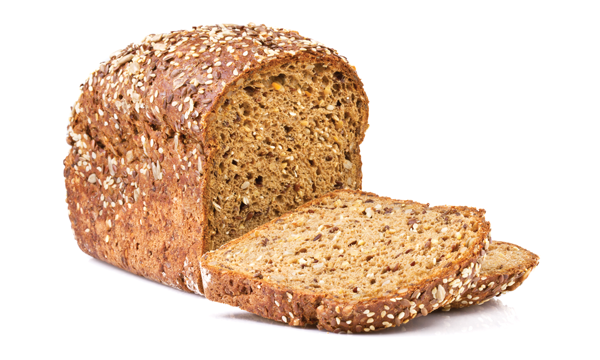

The Dutch government changed the national bread legislation
In Europe most of the food legislation is EU legislation. The regulation for the provision of food information to consumers is obligatory for nearly all food products19. The label has to contain the ingredient declaration and Nutrition Table (per 100 gram). This table on pre-packed foods is a prominent source of nutritional information on the back of the pack, to help consumers make healthier choices. The use of nutrition and health claims in the EU is voluntary, but regulated20, nutrition claims are more frequently used. A ‘nutrition claim’ means any claim which states, suggests or implies that a food has particular beneficial nutritional properties (Table 2).
Also the use of Front-of-pack (FOP) labelling, such as health logos, traffic light systems and/or Reference Intakes, is also voluntary. All are introduced to guide the consumer to a more healthy choice. Products must comply with the criteria for ingredients such as salt, trans fat, saturated fat, (added) sugar and energy.
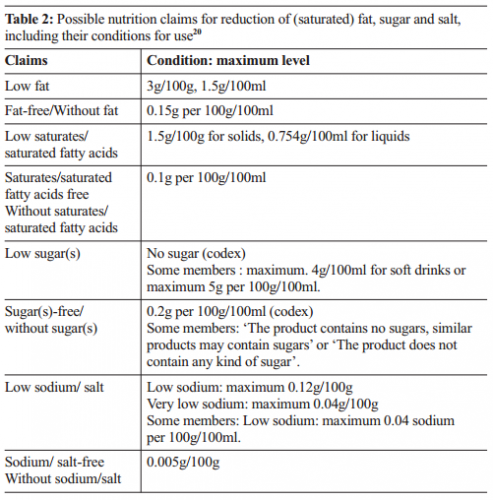

Consumer perspective
In general, three factors affect consumer decisions in relation to food intake: social psychological, economic, and environmental. Generally, the sensory properties (taste, smell and texture,) of foods have the most powerful influence on consumers21. Consumers accustomed to high concentrations of salt/sugar in food have difficulty accepting reduced salt or sugar products. A change in consumer behaviour is required to ensure that lower salt/sugar products will be accepted and to prevent consumers adding salt during cooking. The step-by-step reduction in salt/sugar is only possible with the consensus of all manufactures in a product group. Marketing is crucial, as consumers may assume that reformulated products won’t taste as good, because they associate low fat/sugar with less taste. Consumers may accept reformulated products better if they either do not know that they are reformulated, or if they are marketed as a ‘healthier’ product22 .
Consumers report to look at the nutritional information, but studies in 27 European countries showed that consumers make very fast choices at the shelf, using information selectively23. Although consumers evaluate the Nutrition Table positively, it receives little attention and does not stimulate healthy choices. While consumers in the EU have a reasonable knowledge of nutrition and most consumers can use FOP labels (Figure 2) when prompted, only a minority actually reads this information when shopping24. Whether these FOP labels affect consumers’ purchase decisions is still under discussion. Studies describe the effect in the range of ‘unknown’ to ‘they seem to enhance healthy product choice’, even when consumers were put under time pressure24,25. Consumers prefer short simple claims over long, complex and scientific claims and have a preference for claims with supporting information on the back of the package.
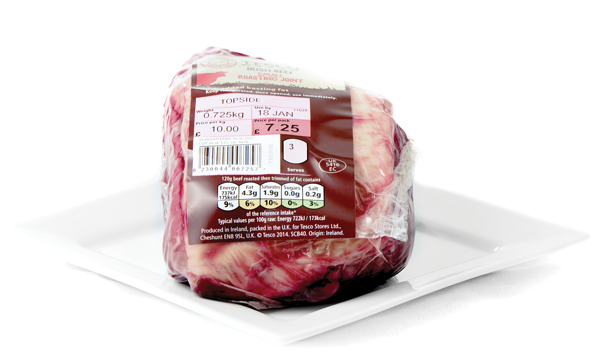

Figure 2: Examples of Front of Pack labelling used in The Netherlands, Denmark (health logo) and in the UK (Reference intakes with traffic light colouring)
Price aspects of food products are a very important driver for both retail and consumers. Reformulated products are generally more expensive than their traditional full-fat, sugar or salt counterparts. The cost of reformulation includes the cost of new ingredients, changes of food processing machinery, staff time and training, as well as the cost of changing labels22. However, most retailers and consumers require that reformulated products have the same taste and no higher price as their original counterparts. A reverse approach is to demotivate the choice for products high in salt, fat and sugar by, for example, taxation of sugar or fat, restrictions in advertising, and limiting selling points. This was discussed above. It is probable that a combination of several measures will be needed to stir the consumer to reformulated products26.
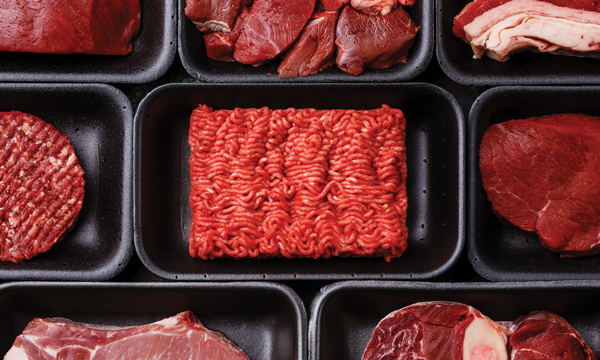

Meat and bakery are important contributors to the intake of energy, salt, saturated fat and sugar
Conclusion and outlook
In summary, this article presents an integrated approach towards reformulation of foods with respect to salt, sugar and (saturated) fat content. Reformulation has been discussed from four disciplines: Nutrition & health, Food technology, Legislation and Consumer perspective. The integrated approach is essential for the successful development of ‘healthier’ products.
Nutrition & health is and will always be the driver for reformulation. Governments have aimed to reduce our intake of salt, sugar, trans fat and saturated fat over the last decade and will continue to do so, whilst ensuring consumers are not being misled. Until now salt and trans fat have been the main focus. The solutions available to food producers can be limited by legally approved ingredients and by the food technological solutions that are available. In many scientific publications on reformulation the focus is solely on the technological possibilities in relation to sensory perception. This should be integrated with consumer acceptance of the applied ingredients and technologies, the impact of these ingredients and technologies on labelling, price and industrial production. In our view, food producers can only successfully reformulate their products and maintain their competitive advantage if the four disciplines discussed here are an integral part of their product development. In particular, the expected further limitation in the levels of salt, sugar and (saturated) fat in various categories of foods will force food producers to approach this challenge with the integrated approach that is proposed by the Framework reformulation.
References
- Costa, A.I.A., & Jongen, W.M.F. (2006). New insights into consumer-led food product development. Trends in Food Science & Technology, 17, 457-465
- Grasso, S, Brunton, N.P., Lyng, J.G., Lalor, F., & Monahan, F.J. (2014). Healthy processed meat products- Regulatory, reformulation and consumer challanges. Trends in Food Science & Technology 39, 4 – 17
- Buttriss, J.L. (2013). Food reformulation: the challenges to the food industry. Proceedings of the Nutrition Society, 72, 61-69
- WHO (2004). Global strategy on diet, physical activity and health. Fifty-seventh World health Assembly. Geneva: World health Organization. Retrieved from: http://www.who.int/ dietphysicalactivity/strategy/eb11344/strategy_english_web.pdf. (last accessed, April, 2016)
- Kloss, L. Meyer, J.D., Graeve, L., & Vetter, W. (2015). Sodium intake and its reduction by food reformulation in the European Union- A review. NFS Journal 1, 9-19
- Milder IEJ; Toxopeus IB; & Westenbrink S (2015) Mono- en disacharidengehalten van voedingsmiddelen: Uitgangssituatie voor het bepalen van veranderingen in productsamenstelling. Retrieved from: http://www.rivm.nl/bibliotheek/rapporten/2015- 0035.html; http://www.rivm.nl/bibliotheek/rapporten/2015-0035.pdf (last accessed, April, 2016)
- Temme, E.H.M. ,Westenbrink S, Toxopeus I.B, Hendriksen M.A.H., Werkman A.M, & Klostermann V.L.C. (2013). Natrium en verzadigd vet in beeld. Veranderingen in de samenstelling van voedingsmiddelen in 2012.(RIVM Briefrapport 350022002/2013). Retrieved from http://www.rivm.nl/dsresource?objectid=rivmp:197826&type=org&disposition=inline&ns_nc=1 (last accessed, April 2016)
- Sadler K, Nicholson S, Steer T et al. (2012) National Diet and Nutrition Survey – Assessment of Dietary Sodium in Adults (Aged 19 to 64 Years) in England, 2011. London: Department of Health
- European Commission (2012). Survey on Members States’ Implementation of the EU Salt Reduction Framework. Retrieved from: http://ec.europa.eu/health/nutrition_ physical_activity/docs/salt_report1_en.pdf. (last accessed April, 2016)
- Newens, K.J., & Walton, J. (2015). A review of sugar consumption from nationally representative dietary surveys across the world. Journal of Human Nutrition and Dietetics,1-16.
- Linseisen, L, Welch, A.A., Ocké, M., Amiano, P., Agnoli, C. , Ferrari, P., … Slimani, N.(2009). Dietary fat intake in the European Prospective Investigation into Cancer and Nutrition: results from the 24-h dietary recall. European Journal of Clinical Nutrition, 63
- WHO (2003). Diet, nutrition and the prevention of chronic diseases. Report of a Joint WHO/FAO Expert Consultation Retrieved from: http://health.euroafrica.org/books/dietnutritionwho.pdf (last accessed December, 2015)
- WHO (2015) Guideline: sugars intake for adults and children. Retrieved from: http://apps.who.int/iris/bitstream/10665/149782/1/9789241549028_eng.pdf?ua=1 (last accessed December, 2015)
- Food Standards Agency (2003). National Diet & Nutrition Survey: Adults Aged 19–64, Energy, Protein, Carbohydrate, Fat and Alcohol Intake. vol. 2, TSO: London
- Busch, J.L.H.C., Yong, F.Y.S., & Goh, S.M. (2013). Sodium reduction: Optimizing product composition and structure towards increasing saltiness perception. Trends in Science& Technology, 29, 21-34
- Ministry of Health, Welfare and Sports. (2016). Roadmap for action on Food Product Improvement. Retrieved from: https://www.google.nl/?gws_rd=ssl#q=roadmap+ for+action+on+product+improvement (last accessed, April, 2016)
- Petitions UK parliament (2016) Retrieved from: (https://petition.parliament.uk/petitions/106651. (last accessed, April, 2016)
- Bødker M, Pisinger C, Toft U, Jørgensen T. (2015). The Danish fat tax-Effects on consumption patterns and risk of ischaemic heart disease. Prev Med. 77:200-3
- Regulation (EC) No 1169/2011 of the European Parliament and of the council of 25 October 2011 on the provision of food information to consumers. Retrieved from: http://eurlex.europa.eu/LexUriServ/LexUriServ.do?uri=OJ:L:2011:304:0018:0063:EN:PDF (last accessed April, 2016)
- Regulation (EC) No 1924/2006 of the European Parliament and of the Council of 20 December 2006 on nutrition and health claims made on Foods. Retrieved from: http://eurlex.europa.eu/LexUriServ/LexUriServ.do?uri=OJ:L:2007:012:0003:0018:EN:PDF (last accessed, April, 2016)
- Fernqvist, F, & Ekelund, L. (2014). Credence and the effect on consumer liking of food. A review. Food Quality and Preference,32,340/353
- Webster, J., & Hawkens, C. (2009). Reformulating food products for health: context and key issues for moving forward in Europe. Retrieved from: http://ec.europa.eu/health/nutrition_ physical_activity/docs/ev20090714_wp_en.pdf (last accessed April, 2016)
- Willams, P. (2005). Consumer understanding and use of health claims for food. Nutrition Reviews, 63(7), 256-264
- Eufic (2009). Pan-European consumer research on in-store observation, understanding & use of nutrition information on food labels, combined with assessing nutrition knowledge. Forum N°4, Retrieved from: http://www.eufic.org/upl/1/en/doc/Pan-EU%20executive%20summary% 20FINAL.pdf (last accessed April, 2016)
- Van Herpen E., & Van Trijp HM (2011). Front-of-pack nutrition labels. Their effect on attention and choices when consumers have varying goals and time constraints. Appetite, 57, 148–160
- Nederkoorn, C., Havermans, R.C.,Giesen, J.C., & Jansen, A. (2011). High tax on high energy dense foods and its effects on the purchase of calories in a supermarket. An experiment. Appetite, 56(3),760–765.









